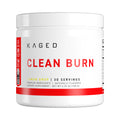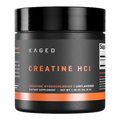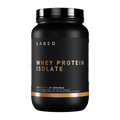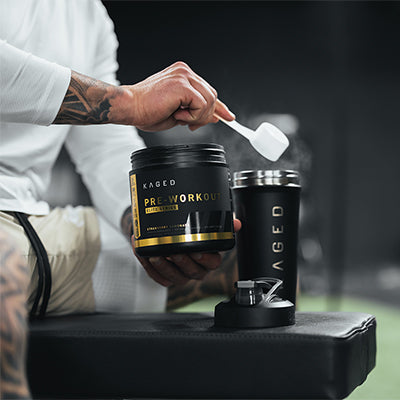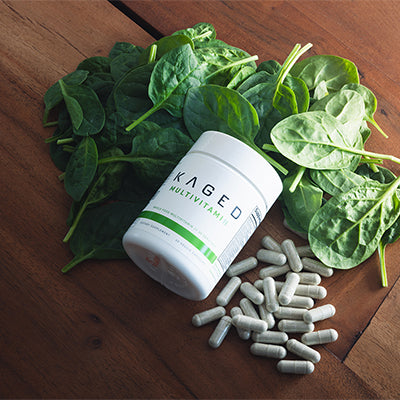While the other two macronutrients, carbohydrates and dietary fats, have taken turns as the black sheep of the macronutrient family, our friend protein has enjoyed a well-deserved rise to fame and adoration.
But protein alone is not the full story. Protein itself is made up of amino acids. There are tons of amino acids, but only 20 proteinogenic amino acids (the ones that matter to us for building muscle).
What Are The Essential Amino Acids?
Of these, 9 can’t be made by the body, which means we have to get them from diet and supplementation. These are called the “essential amino acids.” Here they are in alphabetical order.
- Histidine
- Isoleucine
- Leucine
- Lysine
- Methionine
- Phenylalanine
- Threonine
- Tryptophan
- Valine
We need these essential aminos for countless bodily functions. Foods that contain all of the EAAs are called “complete” proteins. This includes animal proteins like beef, poultry, dairy, whey protein, and more. There are also many complete plant-based proteins like quinoa, soybeans, and buckwheat.
These amino acids are the building blocks of tissue growth. As we write about in this article, they're some of the best amino acids for muscle growth. A lack of essential amino acids flowing through your bloodstream could mean your body is breaking down your precious muscle, especially while training.*
When Should You Take Essential Amino Acids?
Essential Amino Acids, regardless of when you take them, are going to support muscle protein synthesis and may help prevent muscle protein breakdown.*
With that said, you’ll benefit from taking EAAs most before training, during training, after training, and between meals when bulking.
In sum, mostly the peri workout nutrition window.
That’s because these are the times when your muscles most likely need a boost of aminos to prevent muscle breakdown.
After Training EAAs
After training, our body is in a prime muscle-building state. It’s a time when your body craves nutrients and amino acids to rebuild.
Taking EAAs after a workout has been shown to encourage the positive muscle protein synthesis effects of resistance training.
Simply, post-training EAAs can activate muscle-protein synthesis and put you back into an anabolic state where you’re repairing muscle instead of breaking it down.*
However, if you already take a protein powder like Kaged Whey Protein Isolate, this won’t be necessary. That’s because whey protein already contains the full-spectrum of essential amino acids. It’s a fast-digesting complete protein source.

During Endurance Workouts or Long Training Sessions
Endurance training can often put people into a catabolic state. That is, you may enter a zone where without amino acids in your bloodstream, your body eats away at your tissue for fuel. Instead, if you give your body a steady supply of EAAs, you can support your muscles and your performance. Your body will have a steady source of aminos to use. This makes an EAA supplement a good choice for long cardio sessions.
Similarly, if your training session gets longer and longer, you’re also more likely to enter a catabolic state. An EAA supplement can be a tool to put you back into an anabolic state.
You can also take EAAs before your workout, if you know it’s going to be a long session. We include three of the most important EAAs, the BCAAs, in our original, award-winning workout, Pre-Kaged.

Between Meals When Bulking
If you’re trying to gain muscle, that means you want to frequently spike muscle protein synthesis. In between meals you can sip on EAAs to support this, and help promote muscle protein synthesis throughout the day.
How Much EAAs Should You Take?
Most research has shown 6-12 g of EAAs to be effective for promoting muscle protein synthesis. (1) This depends on your body weight, protein needs, and more. High-quality protein powders will get you comfortably into this range with one scoop.
Leucine and BCAAs May Be The Most Important
When it comes to promoting muscle protein synthesis, leucine is the key amino acid.
That’s why, instead of grabbing an EAA supplement, you may get the benefits from BCAAs, which only contain three amino acids: leucine, isoleucine, and valine.
If you want the full spectrum of essential amino acids, look for an EAA supplement that is leucine-heavy to get the most of its muscle-preserving and muscle-building benefits.
As a starting point, 2.5 grams of leucine is a good starting point. If your EAAs don’t have this, you’ll likely want to add in some BCAAs.

GET KAGED BCAA
What Are The Benefits of Essential Amino Acid Supplements?
The intention behind EAA supplementation is to aid muscle protein synthesis (building new muscle) and preventing muscle protein breakdown (maintain your current muscle while you train hard.*
EAA supplementation may also support your muscle recovery.*
Here are more of the details on how this works on a mechanistic level.
Supports Positive Muscle Protein Balance
Positive muscle protein balance is when the rate of muscle protein synthesis is greater than the rate of muscle protein breakdown, our bodies are in a positive muscle protein balance.
This environment supports muscle building.
In one study on this phenomenon, researchers had subjects do a high-volume leg workout with 10 x 10 leg presses and 8 x 8 leg extensions.
The subjects supplemented with 6 g of EAAs, one and two hours after they trained. They drew blood samples from the subject’s legs and the researchers noted that EAAs favorably increased net muscle protein balance. (2)
In another study examining the effects of EAA supplementation on muscle protein synthesis tested subjects during steady state cardio. The researchers had subjects supplement with a leucine-dominant EAA drink while they cycled for 60 minutes at 60% of their VO2 max.
The researchers observed increased muscle protein synthesis and decreased muscle protein breakdown in subjects that took the leucine-heavy EAAs. (3)
Supports Muscle Recovery*
Anyone who works out regularly understands the importance of recovery.
After a grueling workout, your muscle strength decreases, your range of motion suffers, and you may be sore.
All these factors combined can make it difficult to maintain the quality of your subsequent workouts.
In a 2019 pilot study, researchers wanted to see if leucine-dominant essential amino acids (LEAAs) could support muscle recovery.
They had subjects perform an arm workout and supplement with 10.8 g of LEAAs daily for 7 days. Using blood tests, the researchers observed that LEAA supplementation suppressed exercise induced biomarkers of muscle damage. (4)
Can You Get The Same Benefits From Protein or BCAAs?
A complete protein powder like Whey Protein Isolate will provide you with all of the essential amino acids.
So if you take a whey protein shake post-workout, then an EAA supplement is redundant and not necessary post-workout.
There’s also a case to be made that before training and during training, a BCAA supplement will cover the muscle protein synthesis, so there’s no need for all of the EAAs.
At Kaged, we have moved away from a focus on EAA supplements, and instead highlight BCAAs as an intra-workout option and protein to take post-workout.
Not All Aminos Are Made The Same: What to Look For In An EAA or BCAA Supplement
While we’ve talked about the benefits, when to take EAAs, and how much to take, but not all of the EAA supplements out there are created equal.
Here are a few factors to look for in an EAA and BCAA supplement.
Choose a Leucine-Dominant Option
A lot of the research on essential amino acids used a leucine-heavy formula.
Leucine is one of the nine essential amino acids. It’s responsible for “flipping the anabolic switch” that puts our body into a muscle-building mode. In more scientific terms, l-leucine helps activate mTOR, the body’s master protein synthesis regulator.
Use a Plant-Based EAA or BCAA
Some companies use amino acids derived from animal by-products such as bird feathers or human hair that have undergone harsh chemical treatments.
In contrast, if you grab an option that uses 100% plant-based aminos, you’re much more likely to get high-quality aminos.
Want to Reduce Muscle Breakdown? Try Kaged BCAA
Kaged BCAA has a 2:1:1 leucine-heavy formula to help reduce muscle protein breakdown.* It’s also made from plant-based sources, so you’re getting clean aminos suitable for vegans.
It comes as an unflavored powder that’s designed to be mixed with your existing stack. Lots of the Kaged community mixes BCAAs with Hydra-Charge, our great-tasting electrolyte drink, to take during their workout.
Both electrolytes and BCAA are on our shortlist of supplements to take during your workout.
GET KAGED BCAA
FAQ
Should I Take EAAs Pre-Workout If I Take Pre-Workout?
It depends on what’s in your pre-workout. Pre-Kaged contains 6.5 grams of branched-chain amino acids, so you likely won’t benefit from taking even more amino acids.
Why Is The Timing of Taking Essential Amino Acids Important?
To optimize muscle protein synthesis, your body needs a consistent flood of amino acids, in particular leucine.
Taking EAAs in supplement form likely provides the most benefits when you’re not getting a flood of amino acids from whole food sources. For this reason, it doesn’t make sense to take them with meals. Rather, you’d only take them when you need them most and don’t have access to food, like during or post-workout.
Can You Take EAAs or BCAAs On An Empty Stomach?
Yes, you can take them on an empty stomach. In fact, they’re popular in between meals and while fasted.
Can Vegetarians and Vegans Get Enough EAAs Through Their Diet?
Vegetarians and vegans can obtain enough essential amino acids through a well-planned diet that includes a variety of plant-based protein sources. Foods such as legumes, grains, nuts, and seeds can provide all the essential amino acids when consumed in complementary combinations throughout the day.
However, the right vegan supplements can also help get in the optimal amount of amino acids. If you’re plant-based, you’ll want to track not only the amount of protein, but also make sure you get complete proteins. That is, proteins that have all nine essential amino acids.
References
(1) Kerksick, C. M., Wilborn, C. D., Roberts, M. D., Smith-Ryan, A., Kleiner, S. M., Jäger, R., . . . Kreider, R. B. (2018). ISSN exercise & sports nutrition review update: Research & recommendations.Journal of the International Society of Sports Nutrition, 15(1).
(2), Borcheim, E., Tipton, K.D., Wolf, S.E. & Wolfe, R.R. (2002). Essential amino acids and muscle protein recovery from resistance exercise.Medicine & Science in Sports & Exercise, 34(5). doi:10.1097/00005768-200205001-01686
(3) Pasiakos, S.M., McClung, H.L., McClung, J.P., Margolis, L.M., Andersen, N.E., Cloutier, G.J., Pikosky, M.A., Rood, J.C., Fielding, R.A., & Young, A.J. (2011). Leucine-enriched essential amino acid supplementation during moderate steady state exercise enhances postexercise muscle protein synthesis.The American Journal of Clinical Nutrition, 94(3), 809–818.
(4) Matsui, Y., Takayanagi, S., Ohira, T., Watanabe, M., Murano, H., Furuhata, Y., & Miyakawa, S. (2019). Effect of a leucine-enriched essential amino acids mixture on muscle recovery.Journal of Physical Therapy Science, 31(1), 95–101. doi:10.1589/jpts.31.95
doi:10.1186/s12970-018-0242-y
*These statements have not been evaluated by the Food and Drug Administration. This product is not intended to diagnose, treat, cure or prevent any disease.

